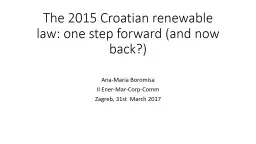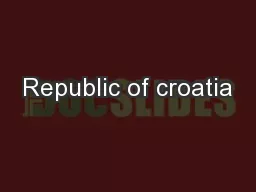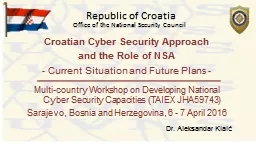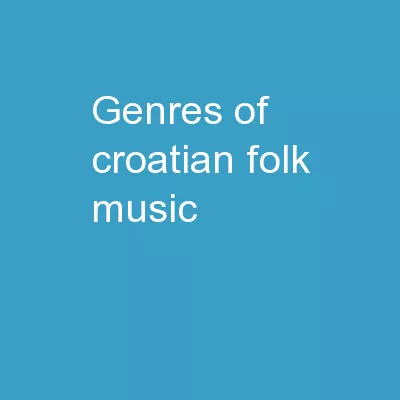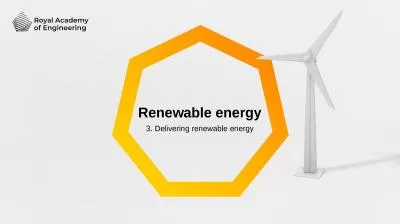PPT-The 2015 Croatian renewable law: one step forward (and now back?)
Author : liane-varnes | Published Date : 2018-02-28
AnaMaria Boromisa II Ener MarCorp Comm Zagreb 31st March 2017 Acknowledgement This work has been supported by the Croatian Science Foundation under the project
Presentation Embed Code
Download Presentation
Download Presentation The PPT/PDF document "The 2015 Croatian renewable law: one ste..." is the property of its rightful owner. Permission is granted to download and print the materials on this website for personal, non-commercial use only, and to display it on your personal computer provided you do not modify the materials and that you retain all copyright notices contained in the materials. By downloading content from our website, you accept the terms of this agreement.
The 2015 Croatian renewable law: one step forward (and now back?): Transcript
Download Rules Of Document
"The 2015 Croatian renewable law: one step forward (and now back?)"The content belongs to its owner. You may download and print it for personal use, without modification, and keep all copyright notices. By downloading, you agree to these terms.
Related Documents

